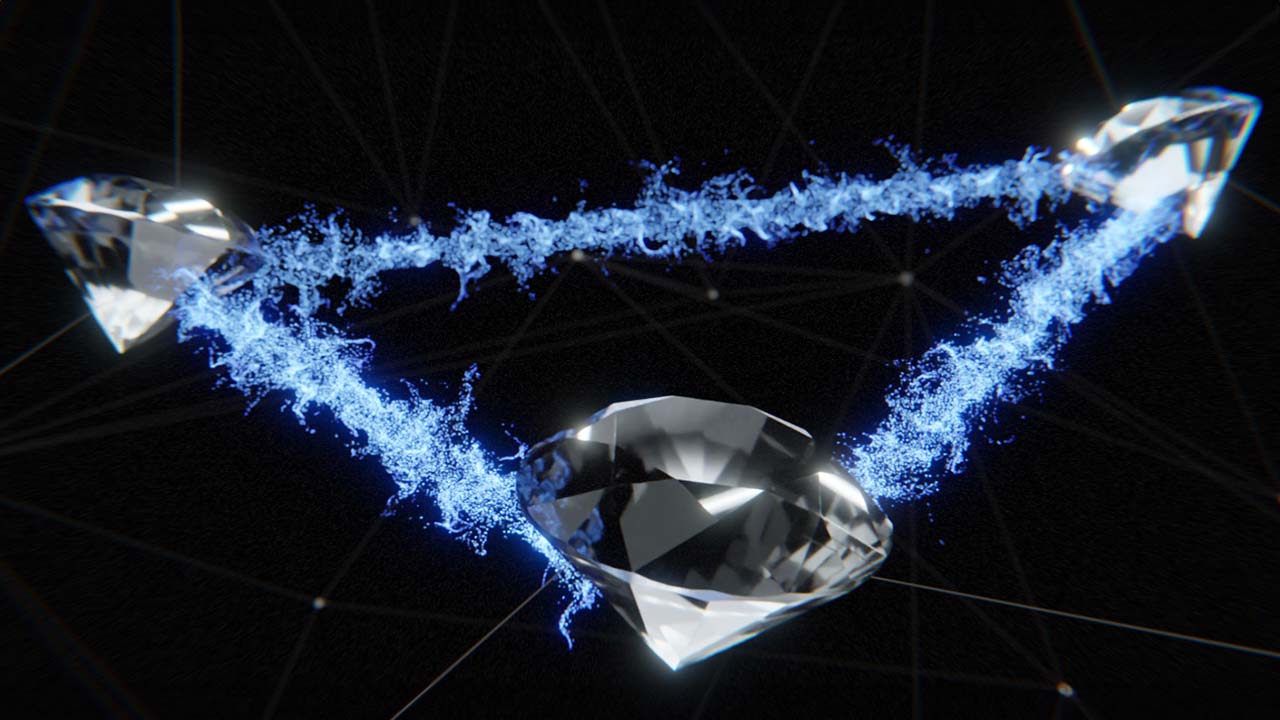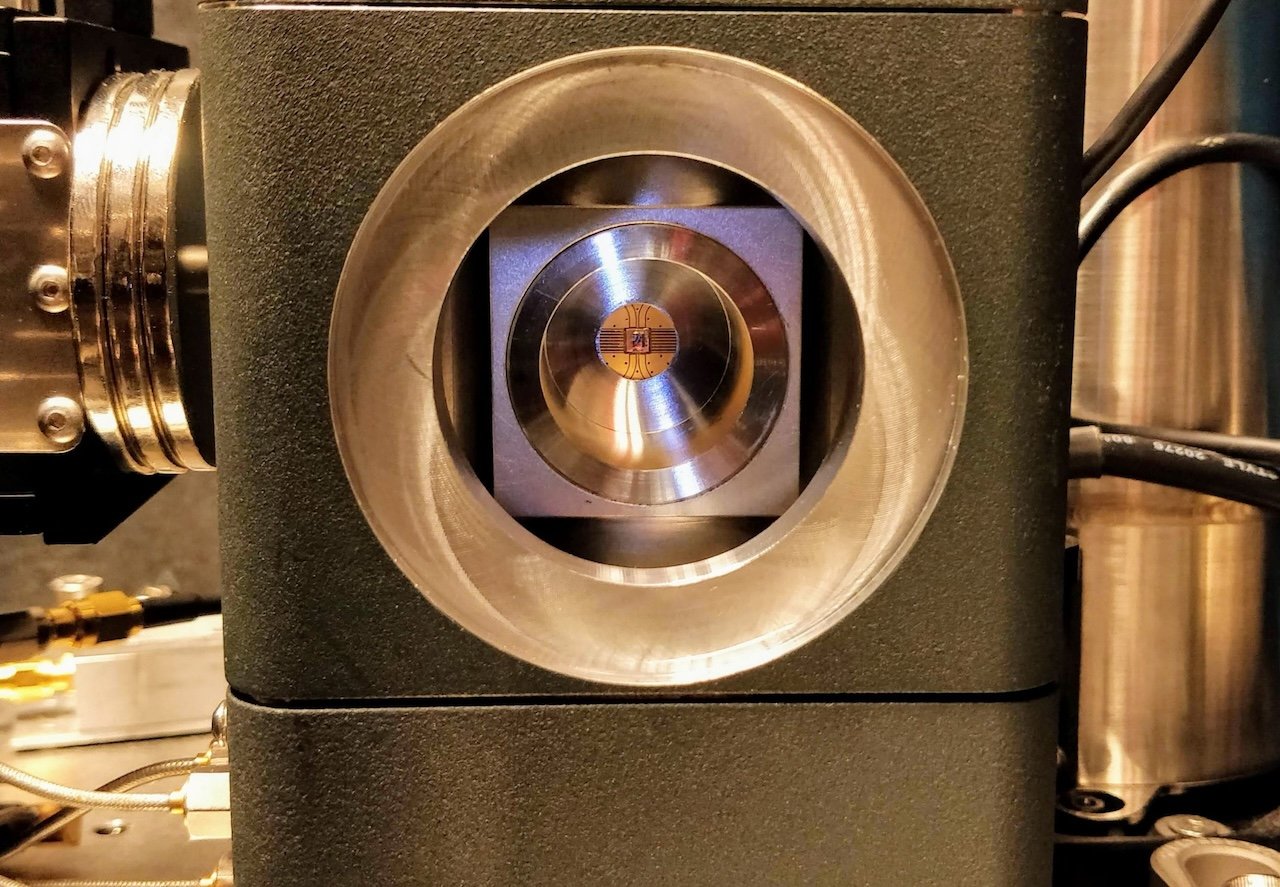
Researchers at Harvard University have demonstrated the longest distance fibre transmission between quantum nodes to date, highlighting that the idea of a quantum internet isn't just fanciful thinking.
Transmitting quantum information between nodes is not a new idea, and it has been demonstrated before. However, performing the feat over a long distance via fibre has always been a stumbling block, due to the degradation of the light signal. Most demonstrations of the concepts of a quantum internet have taken place in laboratories using line of site lasers to create the entangled photons.
Maintaining a state of entanglement over a distance has always been a stumbling block. Entanglement is when two subatomic particles are linked, with a change in one being instantly reflected in the other, even if they are separated by billions of light years. Albert Einstein referred to this phenomena as "spooky action at a distance." When it comes to a quantum internet, the idea is that two qubits (the quantum version of a traditional computer bit) become 'linked'. Once this happens, any change in quantum state of one qubit is instantly reflected in the other, even if they are vast distances apart on a network.
Unfortunately, it is all too easy for an entangled information transmission system to degrade, due to all sorts of reasons, from interference from the outside world to the degradation and scattering of photons. And, unlike traditional ways of transmitting data, quantum information can't be 'boosted' with the use of repeaters.
However, now researchers have managed to show how the transmission of quantum information over long distances is in fact possible in a real-world setting using already existing fibre networks. These latest demonstrations of the potential of transmitting information via entangled photons were performed by three separate research teams, based in the United States, China and the Netherlands, and utilised existing fibre optic networks, with the information being transmitted over several kilometres in busy urban areas. And, while this doesn't mean that we're going to be using a quantum internet any time soon, the experiments represent a gigantic step forward in terms of making such a network a reality.
Three teams, three quantum entanglement methods
According to Nature, the experiments were made possible by using photons in the infra-red area of the spectrum, making them more friendly to optical fibre. However, each of the three teams differed in the type of quantum memory device that they used.
The Chinese team, lead by Pan Jian-Wei at the University of Science and Technology of China (USTC), utilised three separate quantum memory sites at separate labs, which used the collective states of clouds of rubidium atoms in which to encode the qubit quantum states. According to Nature, "The qubits’ quantum states can be set using a single photon, or can be read out by ‘tickling’ the atomic cloud to emit a photon."
The three labs were connected via an optical fibre network to a separate photonic server located around 10km distance away. Because the experiment relied on the photons from at least two of the atom clouds to reach the server at the same time to produce entanglement, the timing required needed to be incredibly precise, thus reducing the practicality of such a system.

The diamond chip of the middle node of the quantum network developed by the Dutch team. Image: Qutech.
The Dutch team's experiment also relied on precise timing, but instead of rubidium atoms they utilised individual nitrogen atoms embedded in small diamond crystals. The qubits were encoded in the electron states of the nitrogen and in the nuclear states of nearby carbon atoms. Importantly, the team performed the experiment over a 25km run of optical fibre, which serves as considerable proof that the transmission of quantum information in a real world setting is possible.
Finally, the US team used two nodes within the same building, but the fibre network they used made its way over long distances throughout the Boston area, apparently crossing the Charles River six times. Unlike the other two teams, the US method required less precision in the timing by sending one photon to entangle itself with a silicon atom at the first node. This photon made its way around the fibre loop, grazing the second silicon atom on arrival, entangling it with the first one.
What can a quantum internet give us?
Okay, so why would we want to do this? Simply put, transmitting quantum information is highly secure, and effectively 'hacker proof'. Another possibility that has been put forward is the idea of connecting several quantum computers together over distance, effectively creating one large computer. Quantum sensor networks are another potential use, enabling high precision measurements, such as highly accurate timekeeping, more precise navigation systems, measurements of gravitational fields, magnetic fields, and other physical phenomena.
On a more 'real-world' playing field that could affect the average internet user, cloud computing could be made totally secure. It's pretty much impossible to intercept the transmission of quantum information without it being detected. AI learning and processing could also be drastically improved with faster training times, improved algorithms, and new ways to tackle data analysis and pattern recognition.
The use of a quantum network could also help improve the overall efficiency of the internet itself, with new protocols and quantum-enhanced algorithms being developed.
Now, it does sometimes seem as if anything to do with quantum computing is a bit like the promise of new battery technology; it never seems to actually arrive in a practical way. But, the experiments above represent one of the most major brick walls to creating a quantum internet being broken down.
References: Nature, Science Daily


Comments